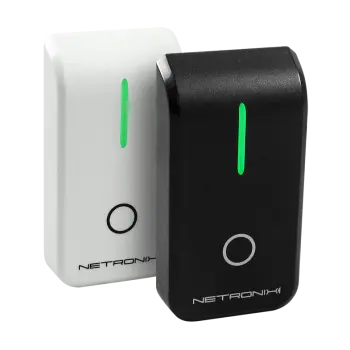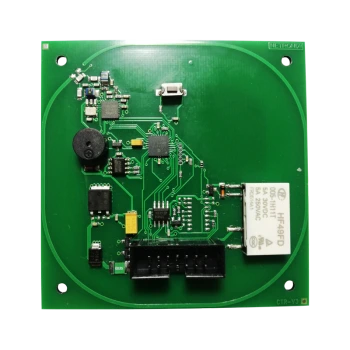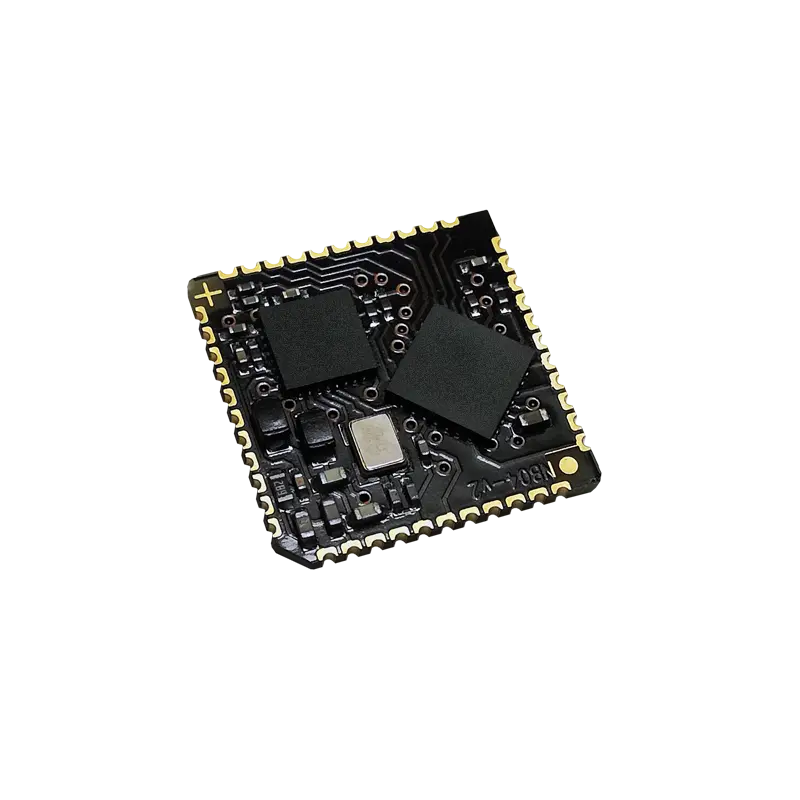RFID readers with the WIEGAND communication protocol implemented most often use 26 or 37 bit data representation, while the WIEGAND interface itself is a wiring standard that grew out of the popularity of card readers with Wiegand' effect and in the 1980s it is commonly used to connect proximity card readers to the rest of the access control system.
The WIEGAND interface uses three wires, one of which is common ground and two of which are data wires, usually named DATA0 and DATA1, alternatively labeled "D0" and "D1" or "Data Low" and "Data high”. When no data is being sent, both DATA0 and DATA1 are pulled up to a "high" voltage level - typically +5 VDC. When a 0 is sent, the DATA0 wire is pulled to low while the DATA1 wire remains high. When a 1 is sent, DATA1 is pulled low while DATA0 remains high.
Main features of the Wiegand standard
Theoretical limit for Wiegand signal wire from controller to reader is approximately 150 meters, assuming excellent quality 18 AWG shielded cable is used in a noise free environment. When using 22 AWG wire, this distance drops dramatically to about 75 meters. Nevertheless, it all depends on the individual characteristics of the application and you may not take these values for granted.
What, however, allowed the Wiegand protocol to spread so widely is its simplicity and openness. However, the standard dating back to the 1980s has its drawbacks, which are currently gaining in strength. Wiegand is a one-way and unencrypted protocol. This currently leaves much to be desired in terms of transmission security, resistance to attacks (including "man in the middle"), and configuration and development of access control applications.
That is why already in 2011, thanks to the efforts of HID Global and Mercury Security Corp., a new open protocol was created OSDP - Open Supervised Device Protocol, which has become the industry standard IEC 60839-11-5:2020 . It is expected that in the coming years there will be a significant migration of Wiegand solutions, due to insufficient support for security rules and archaic topology, which generates significant costs with extensive systems.
Netronix RFID readers with implemented Wiegand interface support

- 13.56MHz
- Wiegand
- "On metal"
MW-R8B / MW-R8G
MW-R8B / MW-R8G is a wall-mounted reader of RFID proximity cards and transponders from the MIFARE® Classic, Plus, Ultralight C, DESFire, ICODE® SLI, HID iCLASS (CSN only) families, operating at 13.56MHz. The reader is adapted to work on metal surfaces.

- 13.56MHz
- Wiegand
MW-R7B / MW-R7G
MW-R7B / MW-R7G is a wall-mounted reader of RFID proximity cards and transponders from the MIFARE® Classic, Plus, Ultralight C, DESFire, ICODE® SLI, HID iCLASS (CSN only) families, operating at 13.56MHz. The reader is adapted to work on metal surfaces.

- 13.56MHz
- Wiegand
CTU-R5RL
CTU-R5RL device is contactless card and transponder RFID reader, with support of the MIFARE® Classic, Plus, Ultralight, DESFire, ICODE SLI, iCLASS (CSN only) proximity standards operating on 13,56MHz frequency. Reader in RS232/UART interface mode works with the Netronix or Modbus RTU transmission protocols.



